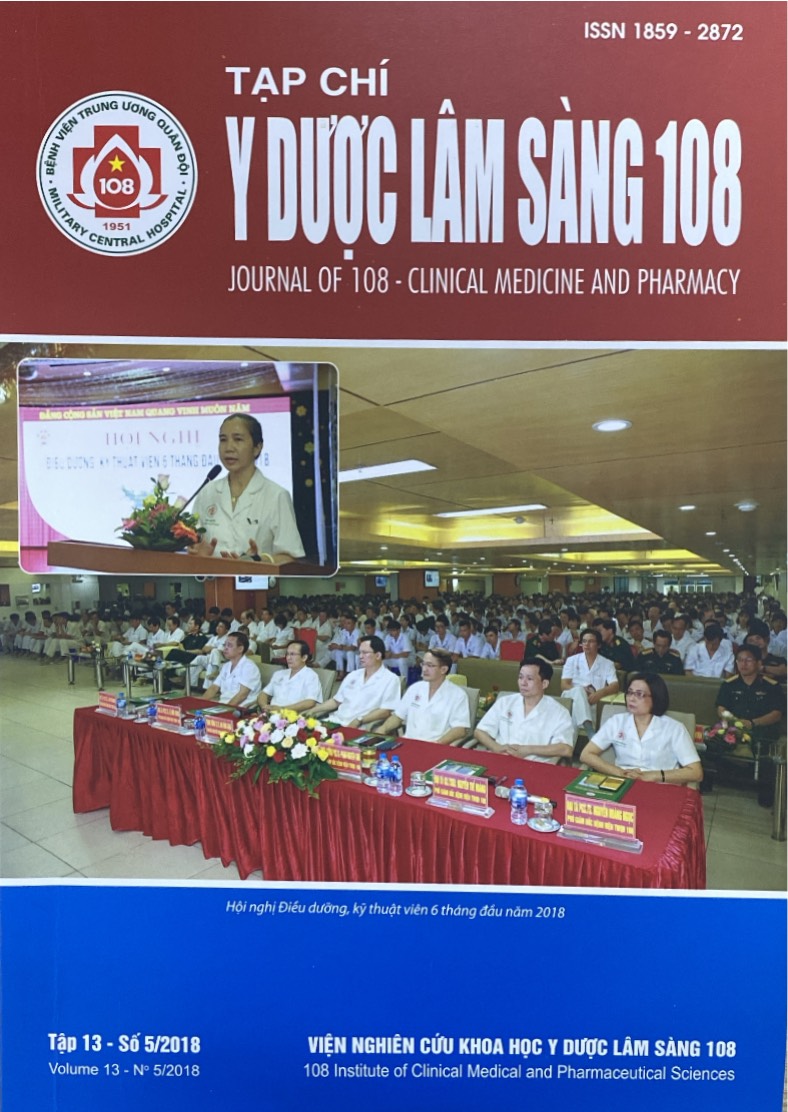Anatomical investigation of deltoid flap in Vietnamese adult people
Main Article Content
Keywords
Abstract
Objective: Anatomical investigation of flap blood supply as well as nerve distribution for free flap transfer. Subject and method: 54 deltoid regions of 27 Vietnamese adult peoples including 11 cadavers preserved in a temperature of -300C (fresh cadavers) and 16 cadavers preserved in formalin soaking (dried cadavers) were dissected to determine the anatomical characteristics of vessel and sensory nerve distribution. Result: Main vessel axial pedicle of the deltoid flap is presented in 54/54 (100%) specimens. Pedicle length is of an average of 8.45 ± 0.48mm, including 1 artery (the posterior circumflex humeral artery with an average diameter: 3.17 ± 0.71mm and it’s cutaneous artery: 1.38 ± 0.13mm), 1 or 2 collateral veins with average diameter of large branch of about 3.51 ± 0.17mm and small branch of about 2.62 ± 0.12mm. The running upward sensory nerve is of an average length of 7.02 ± 0.46cm and the running downward sensory nerve is of an average length of 6.06 ± 0.61cm. The flap surface area infused by methylene blue is in length of 20.41 ± 1.50cm and in width of 12.36 ± 1.62cm. Conclusion: Deltoid flap is a large and sensory free pedicle flap. The distribution of vessel and nerve allows to harvest an large sensory free flap. The flap vessel pedicle is reliable in length and diameter, facilitating free flap transfer using microsurgical techniques.
Article Details
References
2. Nguyễn Đức Nghĩa (2013) Nghiên cứu giải phẫu mạch máu vạt gian cốt cẳng tay sau, vạt cánh tay ngoài và vạt mạc-da delta. Luận án Tiến sĩ y học. Hà Nội, tr. 104-146.
3. Nguyễn Việt Tiến (2011) Vạt tổ chức có mạch nuôi. Nhà xuất bản Y học, tr. 7-14.
4. Nguyễn Quang Vịnh, Nguyễn Thế Hoàng, Lê Văn Đoàn và cộng sự (2014) Kết quả nghiên cứu giải phẫu vạt delta ở người Việt trưởng thành. Tạp chí Chấn thương Chỉnh hình Việt Nam, tr. 275-281.
5. Edizer M, Tayfur V, Magden AO et al (2014) Anatomy of deltoid flap based on posterior subcutaneous deltoid artery: A cadaveric investigation. Int. J. Morphol 32(2): 404-408.
6. Franklin JD (1984) The deltoid flap: anatomy and clinical applications. In: Buncke HJ, Furnas DW, eds. Symposium on clinical frontiers in reconstructive microsurgery. St. Louis: Mosby 24: 63-70.
7. Franklin J, Goldstein R (2009) Free deltoid skin flap. In: Strauch B, Vasconez LO, eds. Grabb’S Encyclopedia of flaps. Lippincott Williams & Wilkins/ Wolters Kluwer 1: 898-902.
8. Kartik G, Krishnan (2008) An Illustrated handbook of flap-raising techniques. Georg Thieme Verlag Stuttgart. New York: 4-7.
9. Meltem A, Metin G, Zeynep A et al (2007) The free deltoid flap: Cilinical applications to upper extremity, lower extremity and maxillary defects. Microsurgery 27(5): 420-424.
10. Russell R, Guy R, Zook E, Merrell J (1985) Extremity reconstruction using the free deltoid flap. Plast. Reconstr. Surg 76(4): 586-595.
11. Strauch B, Chen ZW, Yu HL (1993) Atlas of microvascular surgery. Thieme Medical Publishers, Inc. New York: 44-82.
12. Wang Z, Sano K, Inokuchi T et al (2003) The free deltoid flap: Microscopic anatomy studies and clinical application to oral cavity reconstruction. Plast Reconstr Surg 112(2): 404-411.
 ISSN: 1859 - 2872
ISSN: 1859 - 2872
